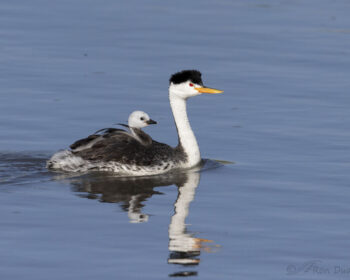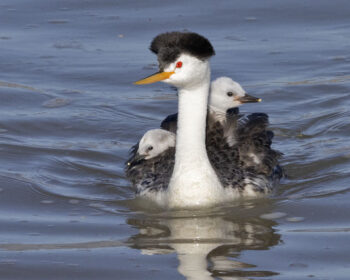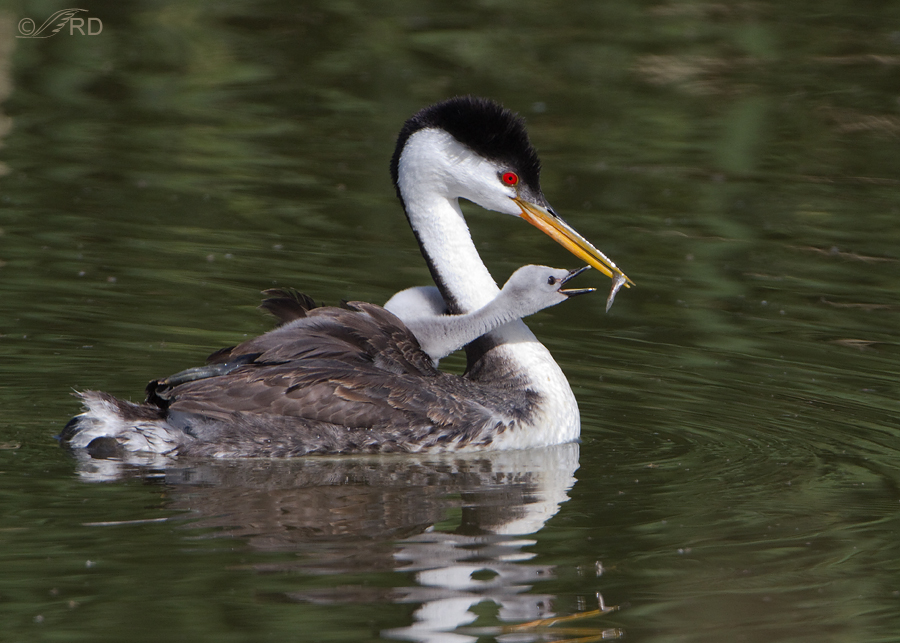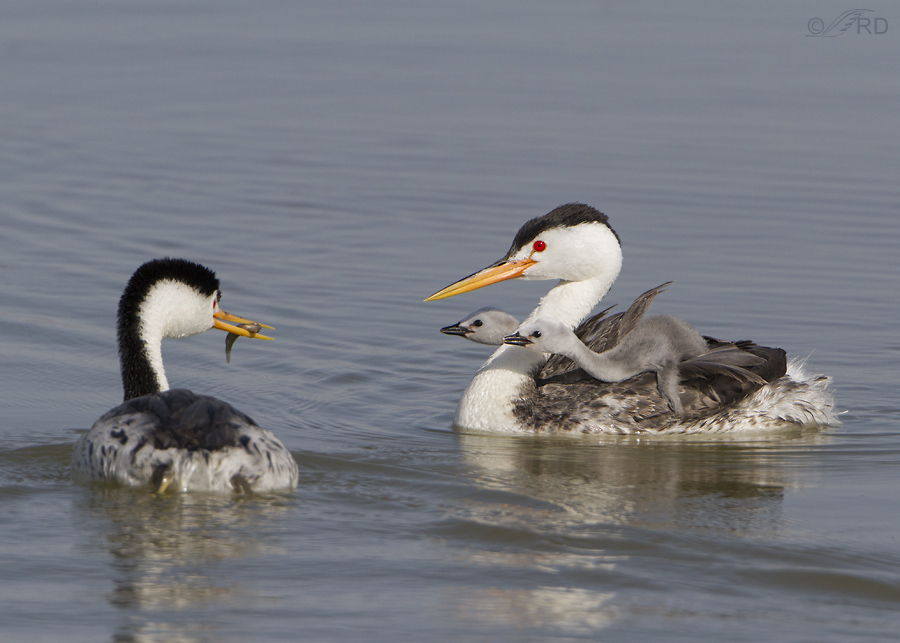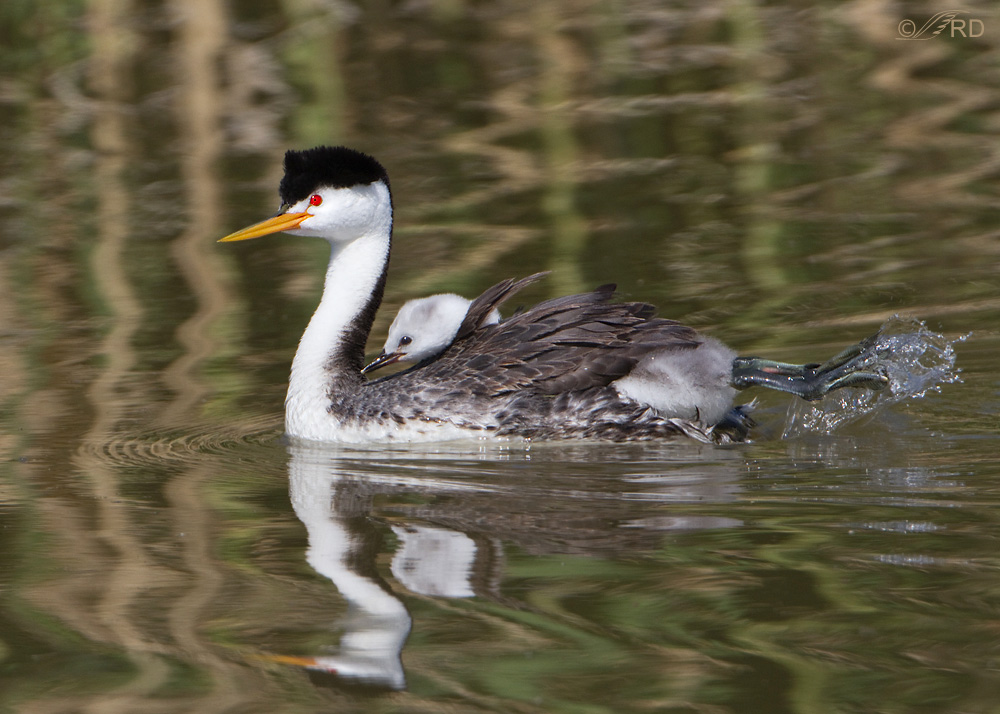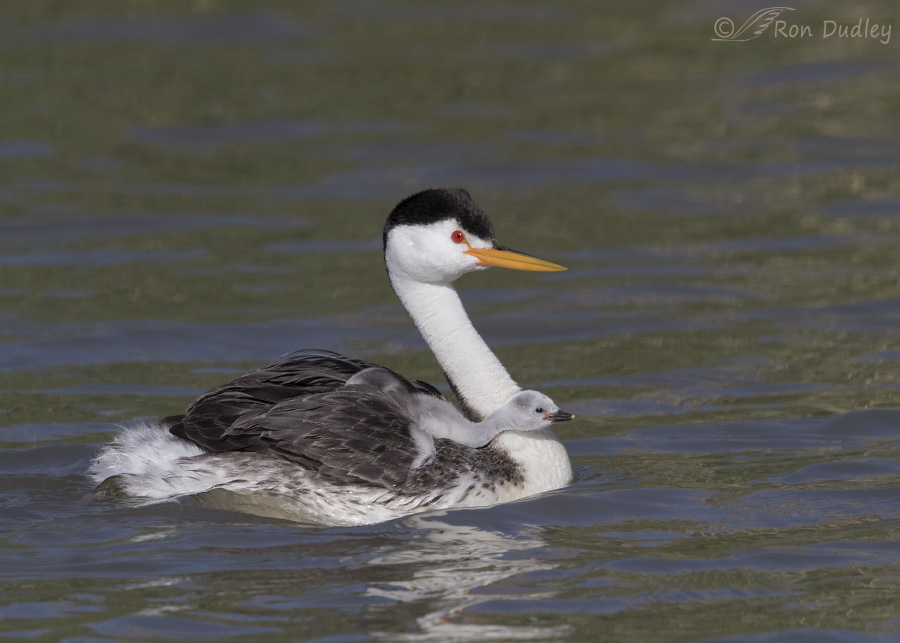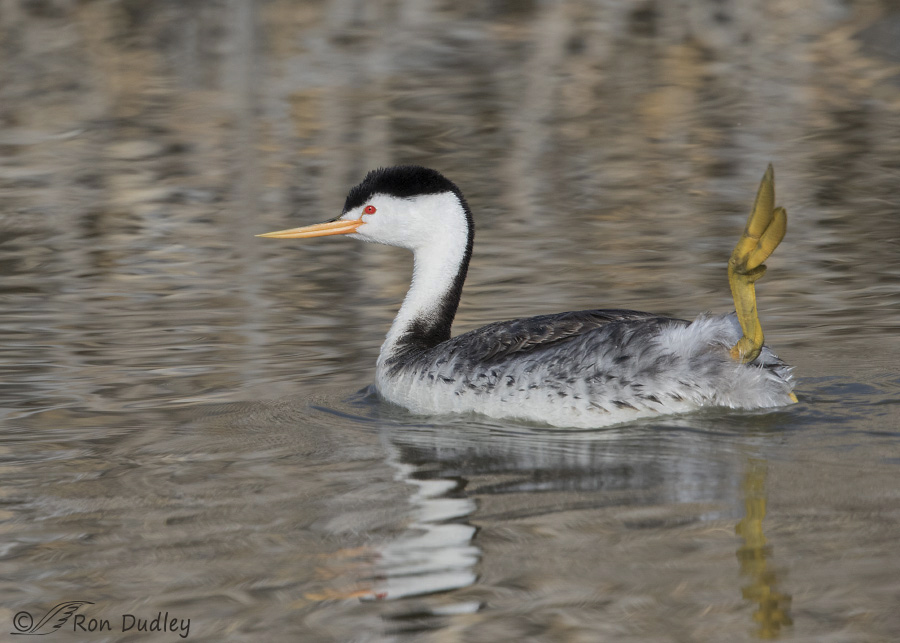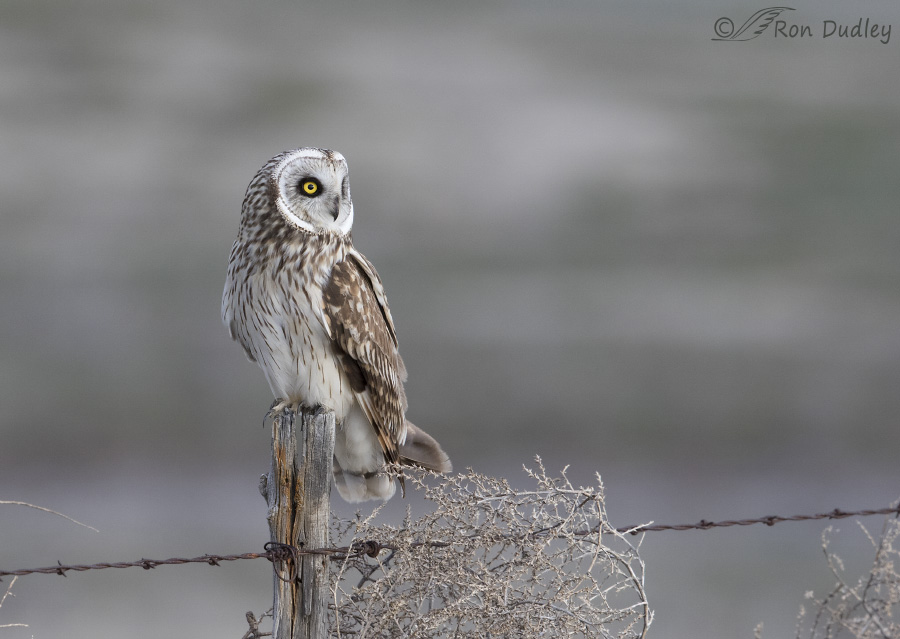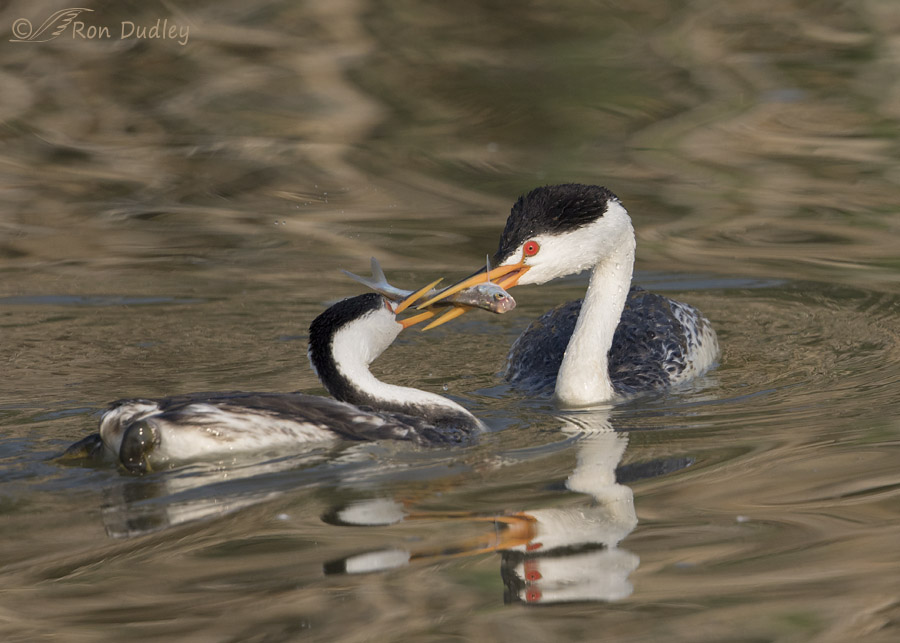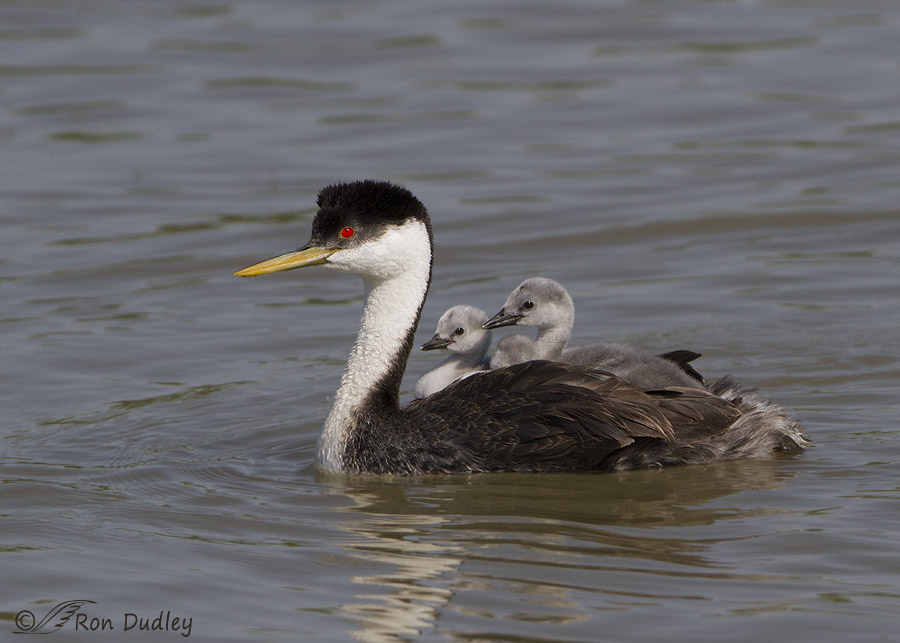Tag: Aechmophorus clarkii
Clark’s Grebe Mama Carrying Kids And Swimming Straight At Me
Clark’s Grebes Feeding Ravenous Chicks
Clark’s Grebes Feeding Their Very Excited Chicks
Can’t We Go Any Faster, Dad?
Clark’s Grebe Back-brooding Chicks
Clark’s Grebe – Drying Off That Foot
Rustic Scenes Of A Short-eared Owl In Cool Light
Clark’s Grebe Trying To Feed A Fish To A Reluctant Juvenile
Grebe Chicks Hitchin’ A Ride
Western And Clark’s Grebes – A Comparison
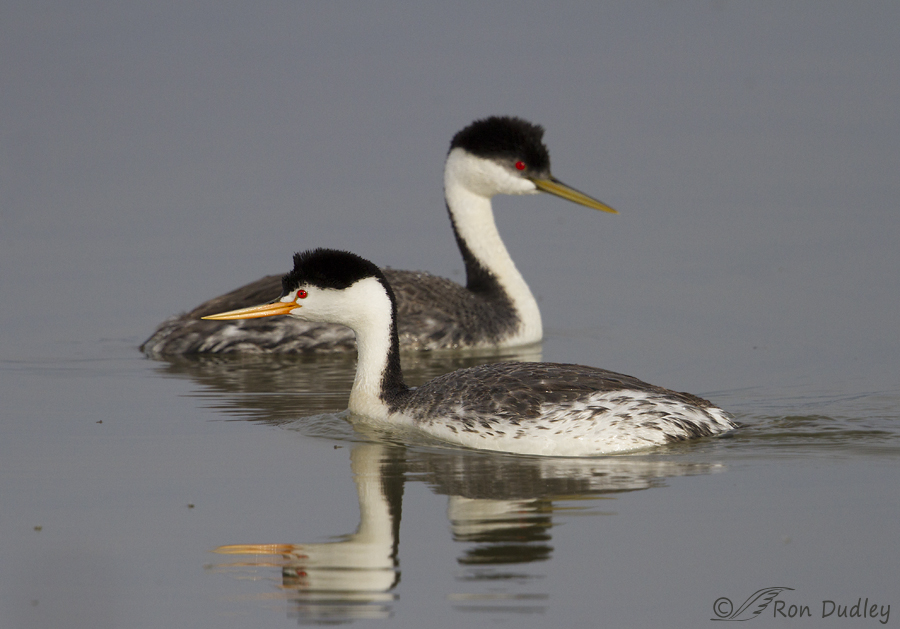
Western Grebes and Clark’s Grebes are so similar in plumage patterns and behaviors that until 1985 they were considered to be color phases of the same species – the Western Grebe. In fact they’re similar enough that many observers never even recognize Clark’s Grebes when they see them and assume that they’re the more common Western Grebe.
Clark’s Grebes – Parents Feeding Fish To Some Very Excited Chicks
This past June I spent lots of time with Western and Clark’s Grebes as they were raising their families. The two species are quite similar but the adult birds in this post can be recognized as Clark’s Grebes by their bright yellow-orange bills and the fact that their eyes are surrounded by white plumage, rather than black. 1/2000. f/7.1, ISO 500, 500 f/4, 1.4 tc, natural light This female of a mated pair was fishing for her family as the male back-brooded two chicks (the sexes take turns with each role). I happened to catch her just as she emerged from the water with a fish and shook the water off. I wish I had better eye contact and more room around the grebe, but this image is full frame. I include it here because it’s the logical beginning of this “fish story”. 1/2000. f/8, ISO 500, 500 f/4, 1.4 tc, natural light Seconds later she swam over to deliver the fish to her family. Sometimes the fish will be given to the brooding parent, who may eat it or give it to a chick. Other times, the fishing parent gives it directly to one of the youngsters. Either way, if the chicks are hungry they become very excited and aggressive in their attempts to be the one who gets the fish. Before the young birds saw breakfast coming their way, they were tucked down peacefully under each wing with only their heads and necks sticking out. All that changed in an instant. 1/2000….
Clark’s Grebe Mama Carrying Kids And Swimming Straight At Me
Clark’s Grebes Feeding Ravenous Chicks
Clark’s Grebes Feeding Their Very Excited Chicks
Can’t We Go Any Faster, Dad?
Clark’s Grebe Back-brooding Chicks
Clark’s Grebe – Drying Off That Foot
Rustic Scenes Of A Short-eared Owl In Cool Light
Clark’s Grebe Trying To Feed A Fish To A Reluctant Juvenile
Grebe Chicks Hitchin’ A Ride
Western And Clark’s Grebes – A Comparison

Western Grebes and Clark’s Grebes are so similar in plumage patterns and behaviors that until 1985 they were considered to be color phases of the same species – the Western Grebe. In fact they’re similar enough that many observers never even recognize Clark’s Grebes when they see them and assume that they’re the more common Western Grebe.
Clark’s Grebes – Parents Feeding Fish To Some Very Excited Chicks
This past June I spent lots of time with Western and Clark’s Grebes as they were raising their families. The two species are quite similar but the adult birds in this post can be recognized as Clark’s Grebes by their bright yellow-orange bills and the fact that their eyes are surrounded by white plumage, rather than black. 1/2000. f/7.1, ISO 500, 500 f/4, 1.4 tc, natural light This female of a mated pair was fishing for her family as the male back-brooded two chicks (the sexes take turns with each role). I happened to catch her just as she emerged from the water with a fish and shook the water off. I wish I had better eye contact and more room around the grebe, but this image is full frame. I include it here because it’s the logical beginning of this “fish story”. 1/2000. f/8, ISO 500, 500 f/4, 1.4 tc, natural light Seconds later she swam over to deliver the fish to her family. Sometimes the fish will be given to the brooding parent, who may eat it or give it to a chick. Other times, the fishing parent gives it directly to one of the youngsters. Either way, if the chicks are hungry they become very excited and aggressive in their attempts to be the one who gets the fish. Before the young birds saw breakfast coming their way, they were tucked down peacefully under each wing with only their heads and necks sticking out. All that changed in an instant. 1/2000….


